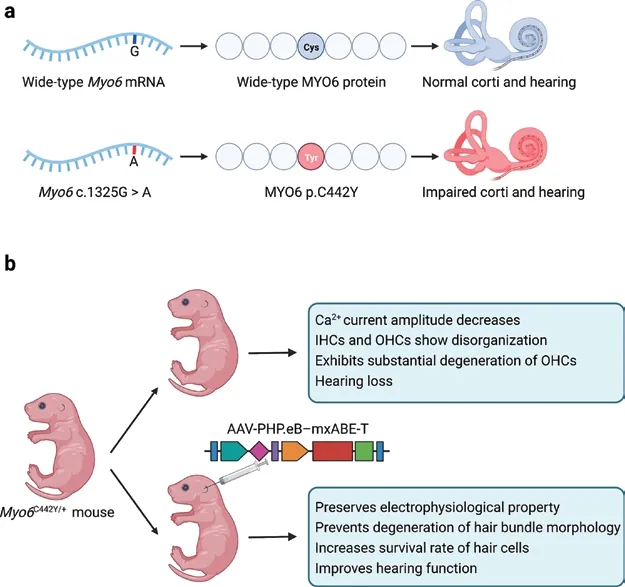In This Issue
2023-09-09
Special | Introducing the Top 10 Advances of 2022
This issue presents a special coverage of China’s top 10 science advances in 2022, as announced by the High Technology Research and Development Center (HTRDC) of the Chinese Ministry of Science and Technology on March 17, 2023.As an outcome of voting by top scientists of the country, this annual selection highlights the most important breakthroughs made over the past year,covering disciplines from space exploration,materials science, to energy, medicine, and more.
Leading the pack is China’s Mars roverZhurong, which revealed the layered subsurface structure of theUtopia Planitiaregion on Mars.Also featured is the fascinating characterization of actively repeating fast radio bursts using China’s Five-hundred-meter Aperture Spherical radio Telescope (FAST).
Other listed achievements include an innovative method to split seawater into hydrogen fuel, insights into Omicron’s mutation traits that enable immune evasion, and milestones in perovskite solar cell efficiency.Cuttingedge advances in memory storage, ultracold molecule synthesis, and experimental physics round out this collection of breakthroughs demonstrating China’s rising scientific prowess.To delve into the whole list, please turn to page 10.

Zhurong (left), the Chinese Mars rover named after the God of Fire from Chinese mythology, examines the Red Planet’s rocky terrain during its groundbreaking months-long mission.By revealing subsurface layers under Mars’Utopia Planitia,Zhurong earned the top seat in China’s annual voting for the most important science advances of 2022.(Image: CNSA/MARS)
Highlights | Revolutionizing Stretchable Electronics: Lego-like Assembly for Robust Connections
On February 15, 2023, a joint research team from the CAS Shenzhen Institute of Advanced Technology (SIAT),Stanford University, and Nanyang Technological University has developed a groundbreaking biphasic, nano-dispersed(BIND) interface, allowing for reliable connections in stretchable electronics.As reported inNature, the BIND interface combines a soft elastic polymer matrix and conductive metal nanoparticles, resulting in a highly robust and stretchable connection that can withstand mechanical deformation.The technology has potential applications in implantable or skin-surface stretchable devices, paving the way for more efficient and versatile electronic systems.To uncover more about this exciting development,please turn to page 20.

A biphasic, nano-dispersed (BIND) interface enables Lego-like assembly for robust connections.(Credit: Nature)
Highlights | Unlocking Sodic Lands for Future Agriculture
On March 24, a new study published online inScienceunveils a promising method to genetically modify crops for increased tolerance to sodic soil conditions.The research revolves around a resilient grain, sorghum, revealing the important role of theAlkaline tolerance 1(AT1) gene locus in the plant’s tolerance to high alkalinity.With this breakthrough, crops could potentially be engineered to survive harsh soil conditions, a reality that’s projected to encompass over 50% of our arable land by 2050 due to global warming.This could mean a pivotal turning point in ensuring food security for future generations.For a deep dive into this research, turn to page 22.

Scientists reveal how sorghum, an African-origin grain, thrives in highly alkaline soils, conditions typically intolerable for many other crops.(Credit: Image created by Midjourney)
Highlights | Harnessing Light and Bacteria for Cancer Treatment
Published on February 14 in the journal ofNational Science Review, scientists led by Dr.JIN Fan and Dr.ZHANG Rongrong from the Shenzhen Institutes of Advanced Technology (SIAT) of the Chinese Academy of Sciences reimagined the battle against cancer.They genetically engineered bacteria to act as microscopic soldiers, infiltrating and combating tumors.This innovative method, known as bacteria-mediated cancer therapy (BMCT), allows these bacterial warriors’behavior to be controlled using external near-infrared(NIR) light.They can control the behavior of the bacteria, allowing for precise control over the process of bacterial adhesion,colonization, and drug release.For a deeper dive into this innovative study, please refer to page 25.

Scientists use light to control the behaviors of drug-loaded bacteria to facilitate the controllable release of therapeutic molecules to target cancer cells.(Image by SIAT)
Highlights | Gene Editing Restores Hearing in Mice and Mitigates Huntington’s Disease in Pigs
In a recent study published inScience Translational Medicine,researchers from CAS Institute of Neuroscience and partners used the mxABE gene editing technique to fix a mutation and restore hearing in a mouse model of genetic hearing loss.This highlights the potential of RNA editing tools to treat sensorineural hearing loss stemming from genetic factors.
In another study published inNature Biomedical Engineering,scientists from Jinan University and CAS Guangzhou Institutes ofBiomedicine and Health used CRISPR/Cas9 gene editing to reduce toxic mutant huntingtin protein levels in Huntington’s disease (HD) pig models.Treating the pigs via injection improved their movement and lifespan.These findings demonstrate the promise of CRISPR-based strategies to lower mutant protein levels as targeted Huntington’s disease therapies.

Gene-editing technique helps restore hearing in mice.(Credit: Signal Transduction and Targeted Therapy)
Testing these cutting-edge gene editing approaches in animal models provides key insights into their potential clinical translation for treating these debilitating human conditions.However, optimizing delivery methods and ensuring safety remain important next steps before human trials.
For more insights, please refer to page 27 and 29.
Highlights | Decoding Germline Mutation Rates

The blue-throated macaw (Ara glaucogularis) shows strong male bias concerning the contribution to germline mutations.(Image by Ted, CC BY-SA 2.0, https://commons.wikimedia.org/w/index.php?curid=8222229)
Published on March 1, 2023, inNature, a new study involving 68 vertebrate species has gained a better understanding of germline mutation rates and their role in species evolution.Researchers from Denmark and China discovered a 40-fold variation in germline mutation rates across species, supporting the “male-driven evolution”hypothesis and revealing correlations with life-history traits.Delve into this fascinating research to learn how these genetic changes contribute to the evolutionary potential of species and interact with other biological factors on page 32.
Highlights | Resurrection of Dormant Retroviruses Contributes to Aging
In a report published inCellon January 6, a team of CAS scientists,jointly led by Dr.LIU Guanghui and Dr.QU Jing at the Institute of Zoology and Dr.ZHANG Weiqi at the Beijing Institute of Genomics discovered a surprising connection between endogenous retroviruses (ERVs) and aging,with potential implications for the development of therapeutic strategies to treat aging-related disorders.
To discover the fascinating relationship between retroviruses and aging,please turn to page 35.

New study shows that the resurrection of dormant retroviruses was related to the aging of human cells.(Credit: CAS)
Highlights | Unraveling the Mystery of Gene Transcription Termination
Scientists have long been interested in gene transcription as it plays a crucial role in controlling gene expression and maintaining genomic integrity.While the factor-independent intrinsic termination pathway was previously known, its structural mechanism remained unclear.Scientists from China and America employed single-particle cryo-electron microscopy to reveal the structural basis for this process.The team captured key intermediate states of bacterial intrinsic termination complexes, shedding light on the step-by-step process of transcription termination.Published inNature, this study lays the groundwork for future research into gene regulation and transcription termination in various organisms.
For more detail, turn to page 36.
Highlights | Unlocking Bacteria’s Defense Mechanisms

Molecular basis of RADAR anti-phage supramolecular assemblies.(Image by IBP)
Scientists at the CAS Institute of Biophysics have made a groundbreaking discovery in bacterial defense against phages.Using advanced cryo-EM imaging, they revealed the complex supramolecular assembly of the RADAR defense system, which could revolutionize our understanding of bacterial biology and inspire the development of new antimicrobial agents, phage therapies, and biotechnological applications.Dive in to learn more about this intricate bacterial arsenal and its implications for future research on page 37.
Highlights |New Images Shed Light on Chloroplast Protein Import
Scientists at the CAS Institute of Biophysics have made a groundbreaking discovery in understanding how chloroplasts, the cellular powerhouses of photosynthesis,import proteins from the cytosol.Using cryo-electron microscopy, the team revealed the detailed architecture of the TOC-TIC supercomplex, which is responsible for ferrying proteins into chloroplasts.This breakthrough paves the way for a deeper understanding of photosynthesis and chloroplast function and raises intriguing questions for future research.Explore the intricate mechanisms of protein import and their implications for our knowledge of plant biology.
For more detail, please turn to page 39.

The TOC-TIC translocon supercomplex imports the preprotein,a type of protein that is synthesized as a precursor molecule and undergoes further processing to become functional, from cytosol into chloroplast.(Image by Dr.LIU Zhenfeng’s group)
